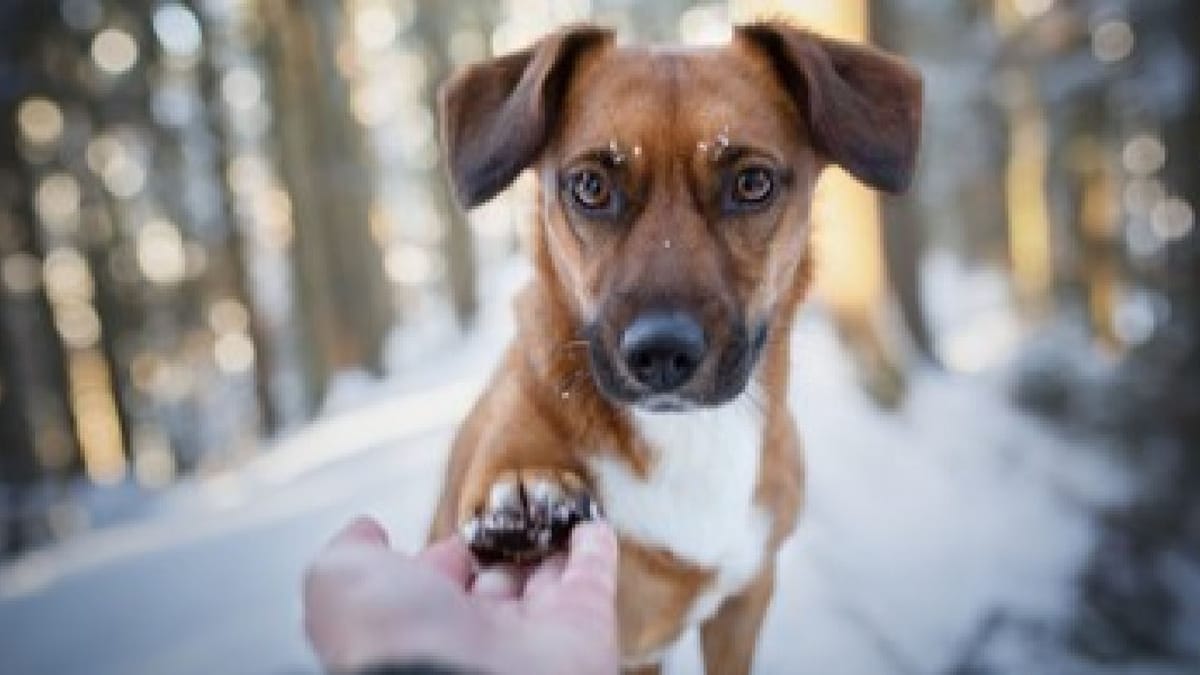Winter has arrived and, in some parts of Italy, so has snow. Whether it’s for a simple walk or for a stay in the mountains with your dog, you need to take some precautions before going out to have fun together and run on the white blanket.
Indeed, not all dogs are resistant to low temperatures and adapted to snow. For this they need to be protected from frost and snow as they can cause problems for our faithful friend’s paws.
In this article, you will discover some tips on how to protect dog’s paws from snow, ice and road salt. To get started, let’s find out how to prepare your dog for the winter cold.
How to prepare your dog for winter and snow?
Before taking your dog for a walk in the snow, you need to prepare him for the lowest grades. Follow our advice on what to do when you have to expose your dog to the cold.
1. Get your dog used to the cold gradually
While not all dog breeds are suited to the coldest temperatures, sometimes they can lose the habit somewhat.
Even a large and thick-coated dog, for example, if it spends most of the day sheltered at home, may lose its habit of being cold and its normal physical adaptations to a lower thermometer, such as: increase in body mass and thickening of the undercoat.
For this, one must be provided adaptation period, gradually exposing the dog to the cold and paying attention to sudden changes in temperature. If the temperature is high inside the home and it’s quite the opposite outside, the dog could suffer a thermal shock.
It is good to allow his body to gradually adapt to the difference in temperature, for example by taking our canine companion to an intermediate area (garage, corridor, stairs) before going out.
2. Shorten the fur on your dog’s paws
To prevent your four-legged friends, especially long-haired dogs, from collecting snowball residue on their paws during winter walks, it is important to slightly shorten the fur around the pads.
3 steps to understand how to protect your dog’s paws from snow
To protect dogs’ paws on snow, ice and road salt, it is useful to follow some important steps to prevent Fido from getting wounds, abrasions or irritations due to the cold.
/cane-bianco-sulla-neve.jpg)
1. Cream for dogs paws in the snow
Before taking your dog out on the snow or ice, rub a little protective treatment on your dog’s pads. This will minimize dry skin and the damage the salt can cause.
Be sure to reapply the product even after returning from walks and playing in the snow. Having a paw balm or ointment on hand is a good way to keep the pads soft and supple during the cold months.
2. Protect the dogs’ paws in the snow with booties
For pet owners who prefer to protect their dogs paws in the snow totally, dog boots or shoes are the ideal solution.
As for us humans, dog shoes are a good way to keep your four-legged friend’s paws covered in the winter.
3. Keep a towel with you at all times
To protect dogs’ paws in the snow, when you take your dog out for a walk in the snow, be sure to wipe his paws with a towel during and after you go out.
This will minimize any damage from salt, ice or other debris that you may have stepped on while you were doing your walk.
What to do when you return home after a walk in the snow?
Upon returning from an outing in the snow or in the mountains with your dog, it is a good idea to follow these simple steps which will allow you to take care of your dog’s paws that have been exposed to the cold.
Take care of the dog’s paws
Both before and above all once the outing with Fido on the snow is over, it is essential to check the dog’s paws and pads because there could be wounds that could become infected.
Wipe your canine friend’s paws thoroughly with a clean cloth or towel when they get home to remove any traces of snow, ice or antifreeze.
Groom the fur to stimulate blood circulation
If you can, also brush your 4-legged friend’s coat to remove not only dirt and snow residues, but also to stimulate blood circulation.

